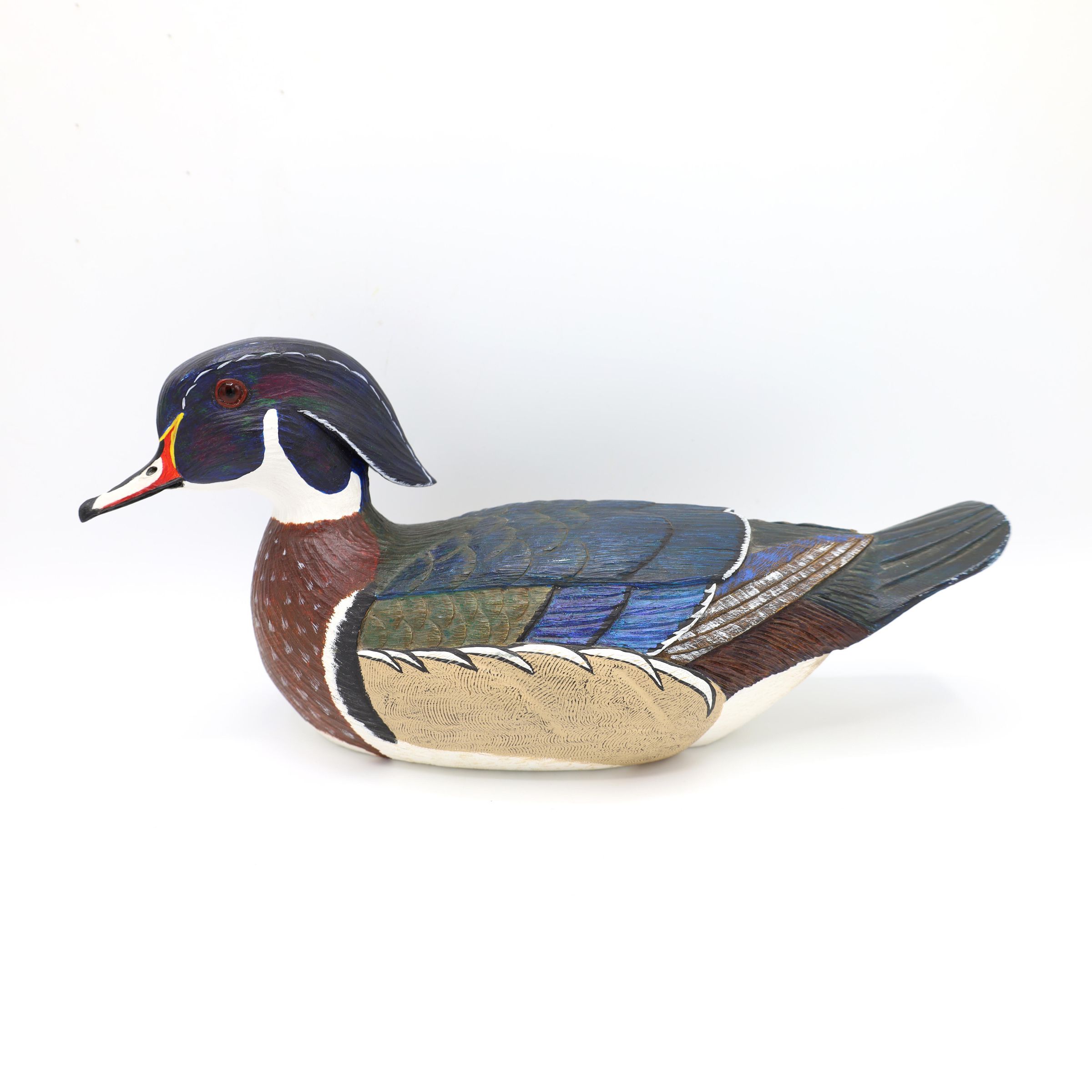Name/Title
Decoy, Wood Duck (Drake), John SharonEntry/Object ID
4.44.11873Description
This Wood Duck decoy is an example of John Sharon's later work. Circa 1972, the decoy, carved from pine, shows significant realism and details in the carving and painting.Context
Duck decoys have a long history in America and can be viewed as a uniquely American art form. Over 2000 years ago, Indigenous people used decoys made of reeds and colored with natural dyes to mimic the waterfowl and lure wary ducks into bow and arrow range. Europeans arriving in America learned the art from the Indigenous people and applied their wood crafting skills to make lifelike wooden decoys.
In the early 1800s, harvesting ducks became an important food source for early immigrants. However, as wetlands were drained for agriculture, duck populations dwindled. Many city dwellers wanting to carry on the tradition of waterfowl hunting traveled long distances to the remaining marshes that rimmed Lake Erie and Sandusky Bay. By 1854, the first hunting club was chartered and protected these areas from continued drainage. The demand for decoys grew, and the manufacturing of wooden decoys started before the turn of the century. Today, most hunters use lightweight plastic decoys.Collection
Magee Marsh Wildlife AreaLocation
Building
Magee Marsh Visitor CenterOhio State Wildlife Area
Magee Marsh Wildlife Area
